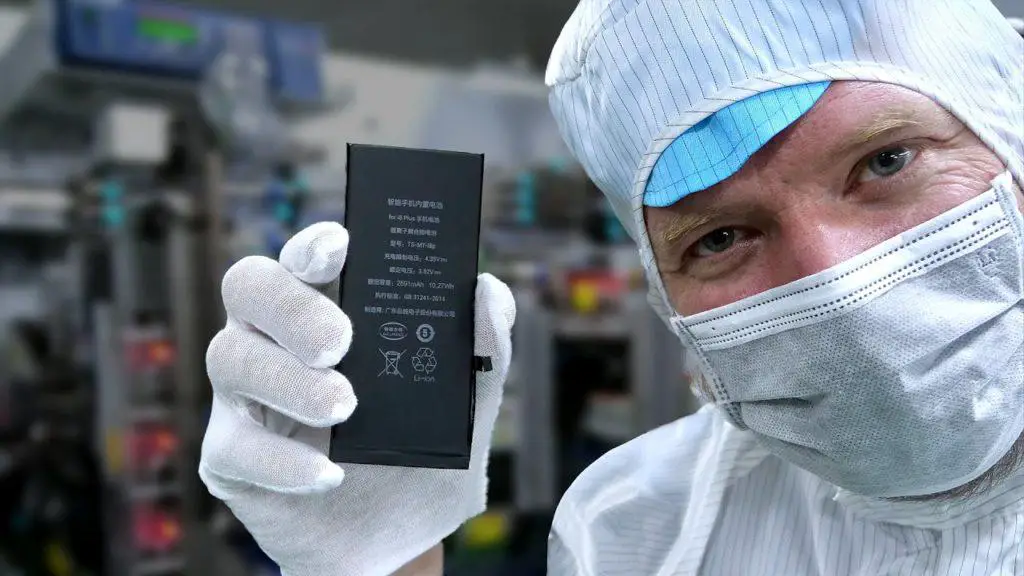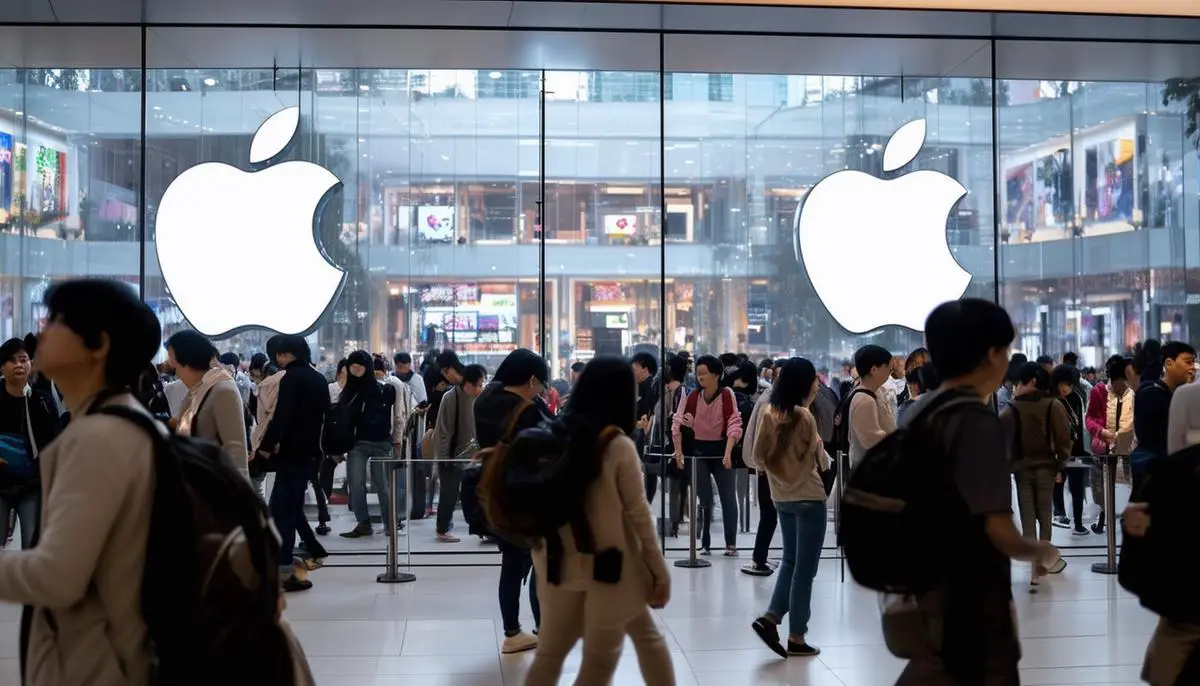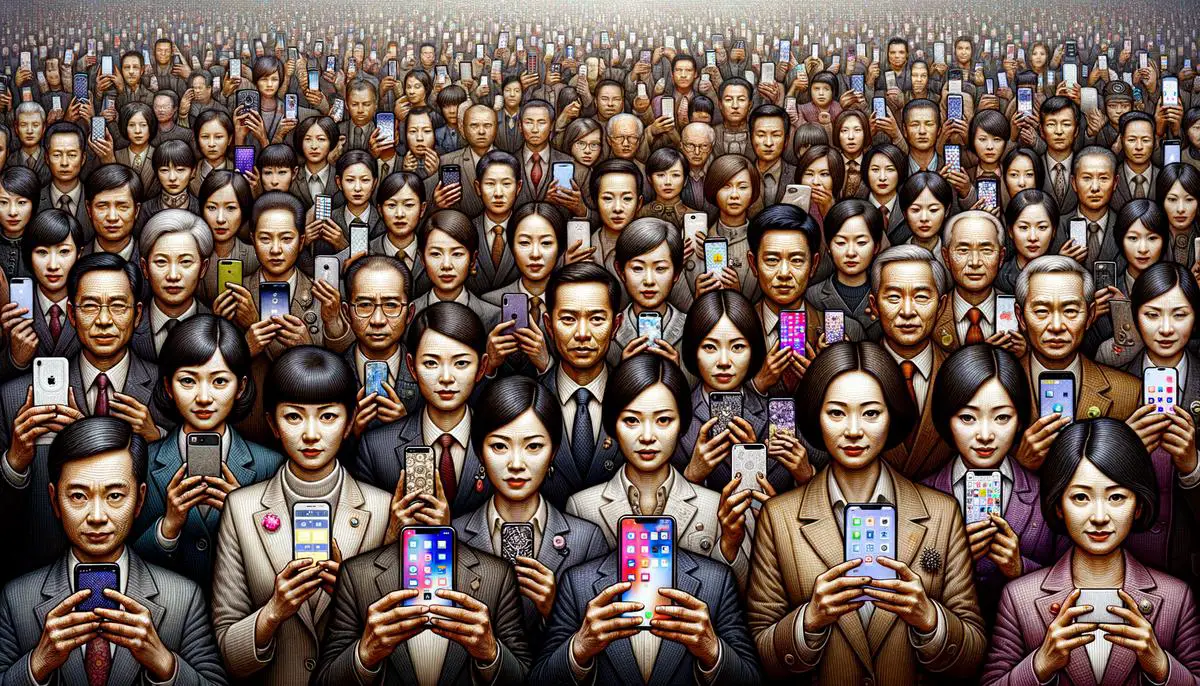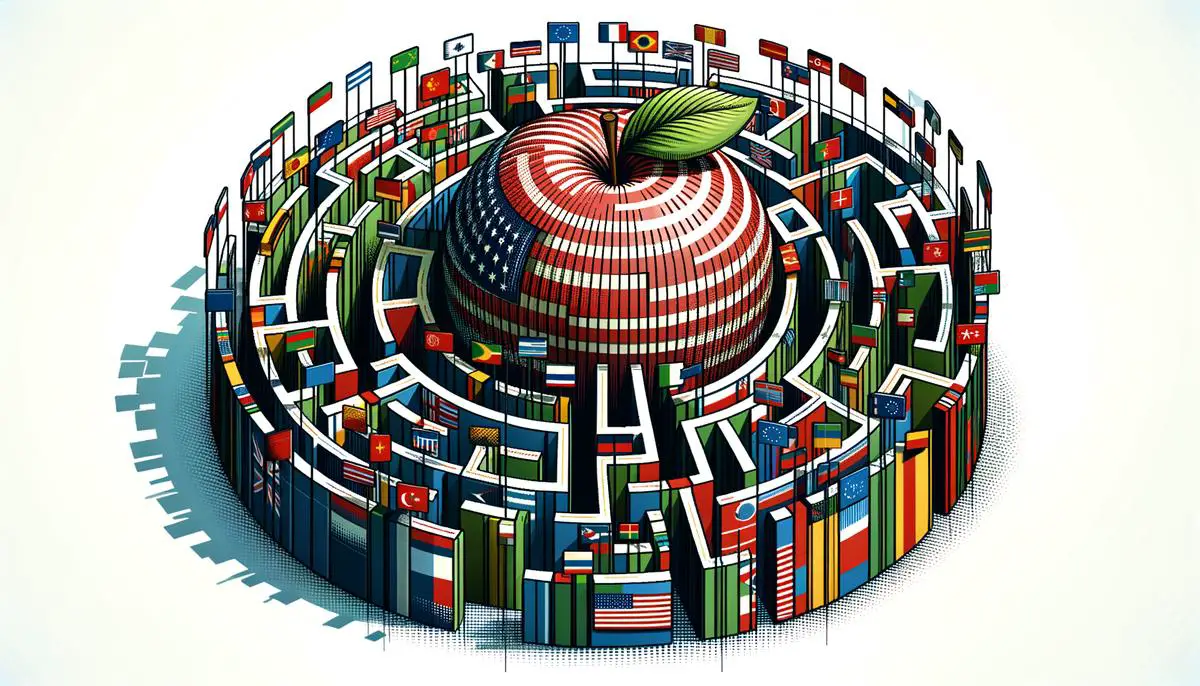Vulnerability to U.S.-China Trade War
Apple's deeply entrenched in China for iPhone assembly, making it vulnerable to U.S.-China trade tensions. A 25% tariff could spike iPhone XS prices by $160. Morgan Stanley analyst Katy Huberty predicts a potential 23% drop in 2020 earnings per share if Apple absorbs the tax hike.
Shifting production out of China isn't just costly; it's like trying to move a mountain with a teaspoon. It would take years and carry significant risks.
Apple's $51 billion revenue from Greater China in 2018 makes it the third-largest market after the Americas and Europe. Trade policy ripples send big waves through Apple's earnings.
- Trump's consideration of tariffs on AirPods and Apple Watches kept everyone on edge
- Consumer sentiment in China has plummeted due to rising trade tensions
- Recent trade skirmishes caused Apple's stock to tumble nearly 6%
Cook's opposition to Trump's tariffs hasn't significantly tilted the scales, leaving Apple in a precarious balancing act between reliance and risk.

Chinese Market and Revenue Dependence
Apple's relationship with the Chinese market is as deep as a well-tended orchard. That sweet $51 billion haul from Greater China in 2018 isn't just pocket change – it's a significant chunk of their global revenue pie.
But trade tensions are like a sudden frost, chilling consumer confidence. Tim Cook himself admitted the economic climate turned frosty in the second half of the year, pointing to the fraught trade tango between the U.S. and China as the culprit.
"Remember that holiday quarter kerfuffle when Apple had to lower its revenue expectations? Yep, blame it on the sluggish Chinese economy, battered by trade spats."
It's like trying to harvest apples during a hailstorm – every uncertainty, delay, or tariff hike hits Apple where it hurts.
Despite Cook's best efforts to sway the tides, engaging in high-stakes discussions and making his stance on tariffs crystal clear, the political chessboard remains a tough nut to crack. Apple's dalliance with the Chinese market is both its golden goose and its Achilles' heel – a delicate balancing act of keeping that orchard in bloom while hoping a sudden trade storm doesn't uproot everything.

U.S. Tariffs and Production Costs
Dealing with U.S. tariffs is like trying to dodge a rainstorm with a bucket over your head. The Section 232 tariffs, enacted in 2018, slapped a 25% hike on imported steel and a 10% hike on aluminum. For Apple, with its heavy reliance on these materials, it's like trying to peel an apple without a peeler – messy and far from efficient.
These tariffs have jacked up costs for raw materials by an average of 25%, making already pricey gadgets an even costlier venture. It's like splurging on a fresh apple only to find it bruised.
Removing these tariffs could be a breath of fresh air for Apple. According to the Tax Foundation, repealing them could boost the GDP by $3.5 billion in the long run.1 That's not pocket change; it's like finding a golden apple in a basket of regular ones.
For Apple, handling these tariff troubles involves a careful juggle between managing costs and maintaining quality. It's a tightrope walk fraught with financial risks and strategic pivots. When it comes to tariffs, Apple's orchard isn't as fruitful as it used to be, and it's high time someone pruned those pesky economic policies for smoother sailing.
Government Restrictions and Impact
Beijing's recent ban on government employees using iPhones at work is like throwing a rotten apple into Apple's sales barrel. With China's massive public sector, this isn't just a few folks switching handsets; it's potentially millions of users dropping the Apple brand.
Public perception in China can flip faster than a pancake on a hot griddle. An iPhone, once the epitome of cutting-edge chic, could quickly transform into the fruit of an unpatriotic endeavor. It's a shift that could bruise Apple's brand image faster than a dropped MacBook.
Domestic Competition
- Huawei's Mate 60P Pro+
- Foldable Mate X5
- HiSilicon Kirin 9000S chip
Financially, the consequences could be as sour as a green apple. If demand dips, Apple could see a significant dent in its $51 billion revenue stream from Greater China. It's money slipping through Apple's fingers, melting faster than ice cream in a heatwave.
Handling these restrictions requires not just slick moves but a comprehensive rewiring of Apple's operations in China. It's a delicate dance, with every step potentially leading closer to either winning back trust or stepping out of favor. Until the tune changes, Apple needs to brace itself for this thorny path, hoping not to lose too many apples along the way.

Global Compliance and Export Regulations
Navigating global compliance and export regulations is like Apple doing a high-wire act over a shark tank. Every move they make is governed by a tangle of rules, sanctions, and classifications that could send them tumbling.
Apple, being the global juggernaut it is, has to dance through a maze of international trade regulations. Their policy aligns with the U.S. Export Administration Regulations (EAR), a hefty rulebook for shipping American tech abroad.
Apple products aren't exactly spy gadgets, but they still need specific classifications. These geeky codes, called ECCNs (Export Control Classification Numbers), make sure your iPhone isn't accidentally starting World War III. Most Apple gizmos fall under EAR99, the "nothing to see here" category, while some get the spicier 5A992.c label, meaning they're good to go but with a few strings attached.
Apple's No-Fly List
- North Korea
- Syria
- Iran (without OFAC golden ticket)
Cuba? Well, that's a different story. Apple products can salsa their way onto the island thanks to some nifty license exceptions. Sudan's also back in Apple's good graces since 2017, with sanctions lifted and a clean slate as of 2020.
And don't even get me started on the EPCI (Enhanced Proliferation Control Initiative). It's basically making sure your MacBook isn't secretly moonlighting as a nuclear missile component. The list of countries cool enough to receive these goods reads like a who's who of U.S. allies.
Apple plays a rigorous game of "don't touch" with denied parties – those blacklisted by Uncle Sam. No Apple goodies for these bad apples without some serious paperwork.
Jumping over to Japan, there's this thing called a parameter sheet – a tech specs cheat sheet that makes exporting from Japan smoother than wasabi on sushi.
Last but not least, let's not forget about those pesky battery regulations. Apple's got to keep report cards on their lithium cells to make sure they don't turn into impromptu fireworks displays mid-flight.
In the grand circus of global trade, Apple's the acrobat juggling flaming regulations while riding a unicycle on a tightrope. They're pulling it off with style, keeping their gadgets flowing around the world without landing in hot water. It's a wild ride, but hey, that's showbiz in the tech world!

Apple's intricate dance with international trade policies and market dependencies underscores a precarious balance between opportunity and risk. As the company maneuvers through tariffs, government restrictions, and global compliance hurdles, it becomes clear that its reliance on China is both a strength and a vulnerability1. The future of Apple's orchard hinges on its ability to adapt swiftly to these shifting economic landscapes while maintaining its technological edge.